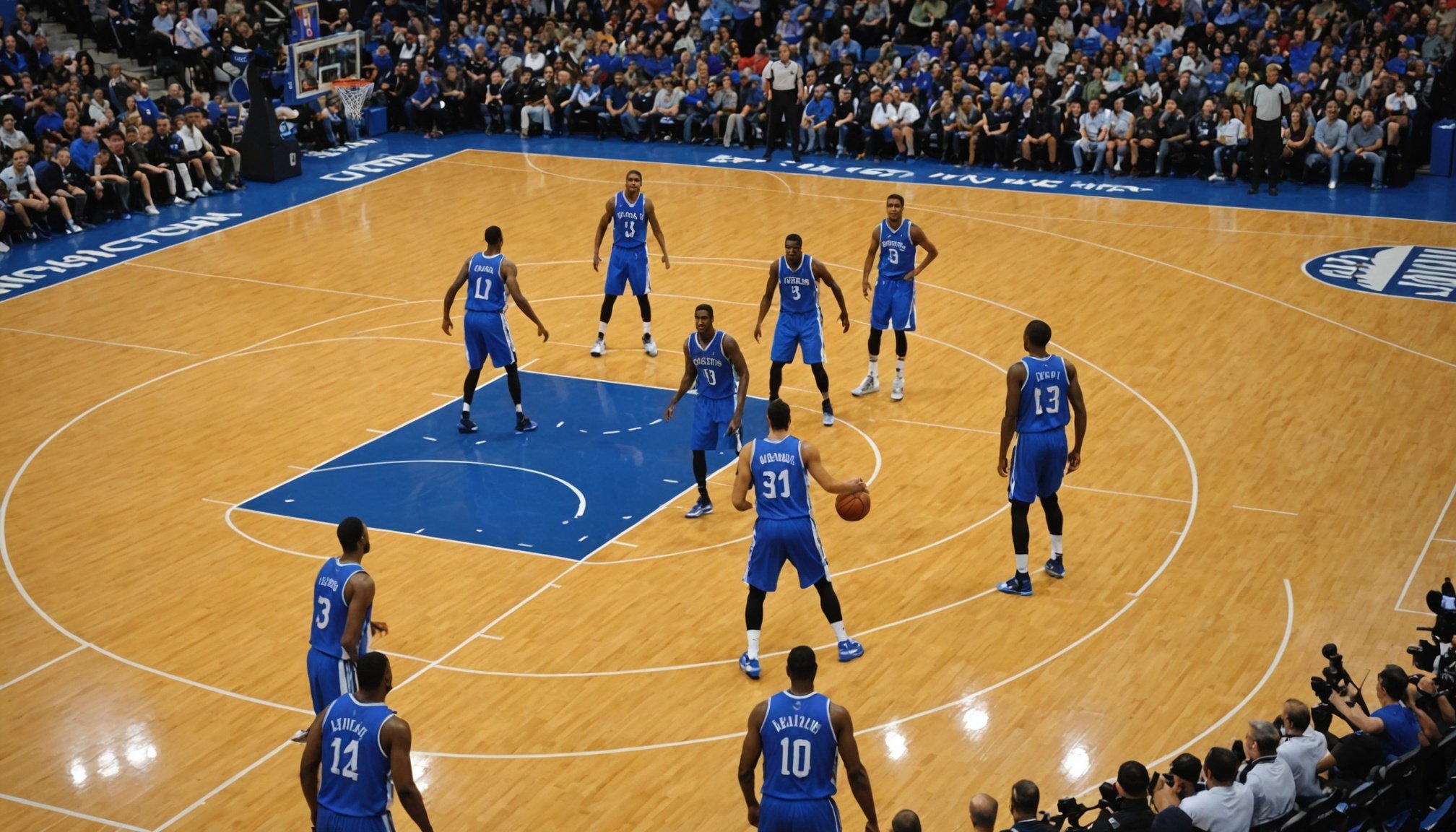Importance of Visualization in Free-Throw Shooting
In the realm of sports, visualization techniques have emerged as vital tools for enhancing athletic performance, particularly in precision-dependent activities like free-throw shooting. Visualization involves mentally rehearsing the act without physical movement, creating a neural pattern similar to actual execution.
Research underscores that athletes employing visualization experience significant improvements. A well-cited study indicates that mental rehearsal activates similar brain regions as physical practice, bolstering mental conditioning. For instance, basketball players who routinely visualize successful shots often see improved accuracy and reduced stress during gameplay.
In parallel : Essential Nutrition Strategies for UK Basketball Centers: Boost Your Game-Time Endurance
In free-throw shooting, visualization assists in reinforcing the muscle memory required for repetitive motion. By mentally picturing successful shots, players condition their mind to stay focused, even under game-day pressure. They envision the ball’s arc, their body’s posture, and even the sound of a swished net. This practice becomes a powerful complement to physical training, offering athletes the confidence of having “practiced” the shot many times over in their mind.
Ultimately, it’s this blend of mental and physical preparation that significantly enhances a player’s free-throw shooting accuracy, making visualization a must-have tool in any athlete’s arsenal.
In parallel : Top Cutting-Edge Shooting Drills for UK Basketball Coaches to Elevate Player Performance
Understanding the Psychology Behind Visualization
Delving into sports psychology reveals that visualization, or mental imagery, serves as a pivotal tool for performance enhancement. Mental imagery involves athletes creating vivid and detailed scenarios in their mind, akin to a mental rehearsal of physical activities. This technique harnesses the brain’s neural circuits similarly as if the activity were being physically performed.
The Science of Mental Imagery
Scientific studies in sports psychology demonstrate that mental imagery can activate the same parts of the brain that get triggered during physical execution of a skill. This mental exercise conditions the brain to respond effectively, laying a foundation for improved physical performance. Research supports that regular practice of mental imagery significantly refines an athlete’s skillset.
Psychological Benefits of Visualization
Visualization reduces pre-competition anxiety and bolsters concentration. Athletes often report a reduction in stress levels and an enhanced sense of focus, contributing to calmer performance environments. This stems from an increased mental preparedness due to well-practiced mental scenarios.
Common Visualization Mistakes
A prevalent pitfall in visualization is over-complication. Athletes may mistakenly believe more complex imagery leads to better outcomes. In reality, clarity and simplicity are crucial. Overly detailed mental rehearsals can cause confusion and hinder performance enhancement rather than promoting it. A focused and straightforward approach to mental imagery yields the best psychological benefits.
Step-by-Step Visualization Techniques for Free-Throws
Skill development in basketball, particularly in shooting, can benefit immensely from visualization. This technique serves as a mental warm-up, enhancing performance before physically practicing.
Warm-Up Visualization
Before practice, sit quietly and visualize yourself performing the perfect free-throw. Imagine the ball’s weight and texture, align your elbows, and picture a smooth release. Visualization exercises like this make the body acclimate to the motion without actual exertion, fostering familiarity.
During Shooting Drills
When engaging in shooting drills, pause occasionally to incorporate visualization. Close your eyes, mentally revisit a successful shot, and focus on the technique used. Visualizing helps the brain reinforce the steps involved in making an accurate shot, thus embedding effective basketball shooting techniques.
Post-Practice Visualization
After a session, employ post-practice visualization to reinforce what you’ve learned. Imagine the shots you excelled at, and how it felt. This reflective step ensures the mental image of success remains vivid, contributing to ongoing improvement. Practicing these visualization strategies consistently complements physical training, helping players achieve better accuracy and confidence in their shots.
Cultural Context and Adaptation for UK Basketball Players
Understanding the UK basketball culture can be pivotal for players looking to excel. This cultural context not only guides players in adapting to local styles but also strengthens their overall game.
Incorporating Local Basketball Traditions
One of the keys to success is embracing local training practices. In the UK, these often differ from those found in other countries, focusing intensely on technique and team synergy. Players must adapt to these styles, which prioritize community engagement and building camaraderie among team members.
Collaborating with UK Coaches and Trainers
Working closely with UK coaches and trainers offers invaluable insights. These experts understand the intricacies of the local game and can tailor training sessions to enhance players’ strengths. Engaging with them can help players refine their skills particularly in adapting to the UK’s distinct basketball methods.
Building a Community Approach to Visualization
Visualization is a crucial tool used by UK players to mentally prepare for games. Community engagement plays a significant role in how players incorporate visualization into their routine. With the influence of UK basketball coaching, players find themselves in an environment conducive to mental training, which is supportive and encourages open discussion on visualization techniques. This team-centric approach ensures each player’s mental readiness, enhancing both individual and team performance.
Success Stories and Testimonials
In the quest for enhanced performance improvement, many UK basketball players have turned to visualization techniques to transform their free-throw shooting statistics. A significant number of player testimonials echo the remarkable impact of these techniques on their game. John, a forward from London, credits visualization for his improved free-throw percentage, stating that imagining successful shots during practice translated into real-life success.
Case Studies: Visualization in Action
Detailed case studies provide a compelling insight into how visualization can drive tangible progress. Sarah, a guard with a local team, participated in a 6-week program focusing on mental imagery. The result? A consistent 15% increase in her free-throw accuracy. This structured program guided players through tailored visualization exercises, enhancing their focus and mental preparation before taking shots.
The feedback from these players reflects a consistent theme: integrating mental imagery into physical practice bridges the gap between potential and performance. Former skeptics now advocate for these strategies after witnessing firsthand improvements in crucial game stats. The correlation between mental rehearsal and physical execution is clear, illustrating the power of visualization strategies in sports settings.
These case studies and player testimonials underscore the effectiveness of mental preparation techniques in achieving consistent results, leading to improved confidence both on and off the court.
Visual Aids and Resources for Effective Visualization
Utilising infographics and videos can dramatically enhance your understanding and execution of visualisation techniques. These resources provide structured guidance that brings depth to training regimes.
Creating Visualization Guides
Creating impactful guides requires a synergy of infographics and written instructions. Begin with clear, concise graphics to illustrate steps or concepts. Pair these visuals with text explanations to ensure comprehensive understanding. Incorporating videos offers dynamic, step-by-step walkthroughs, beneficial for complex topics or techniques needing demonstration.
Recommended Videos and Tutorials
When exploring visualisation, the curated list of videos and tutorials enable you to gain deeper insights. Seek out content from coaches or experienced athletes that provide practical examples. These videos often include slow-motion replays for detailed observation and analysis, enhancing your learning process.
Infographics on Free-Throw Techniques
Infographics serve as practical summaries, especially for mastering free-throw techniques. Use them to distill technique elements into clear, digestible visuals. Look for infographics that highlight key methods, such as body positioning, hand placement, and follow-through. Effective infographics should be easy to reference and remember, making them a valuable tool in refining your skills.
By combining these resources, athletes can achieve a balanced and enriched approach to learning and mastering visualisation techniques.






